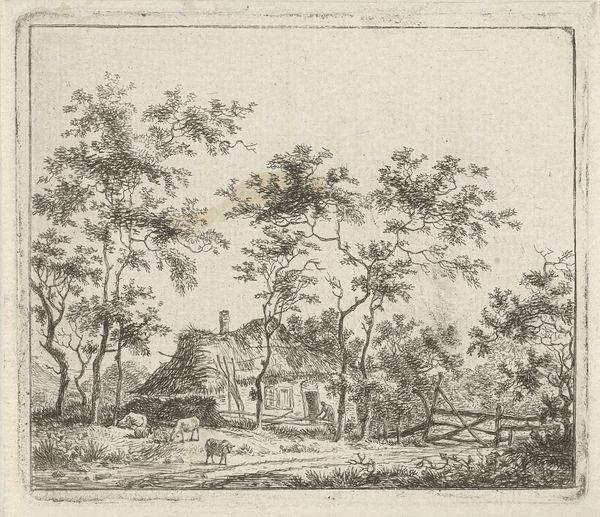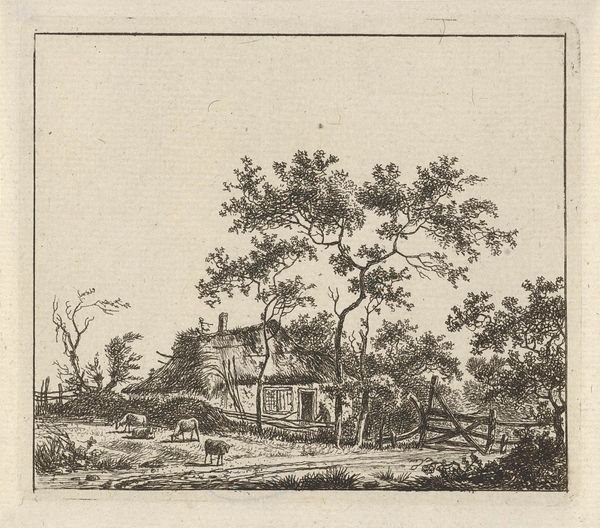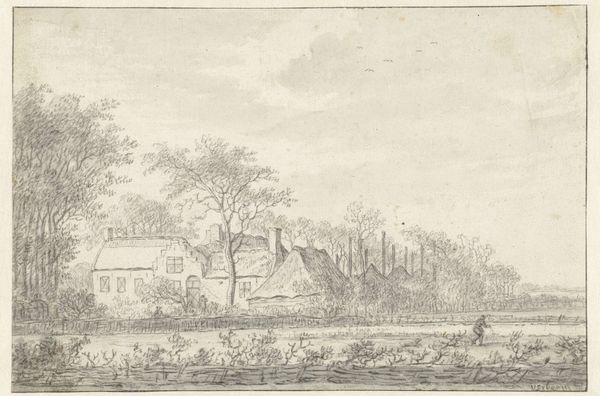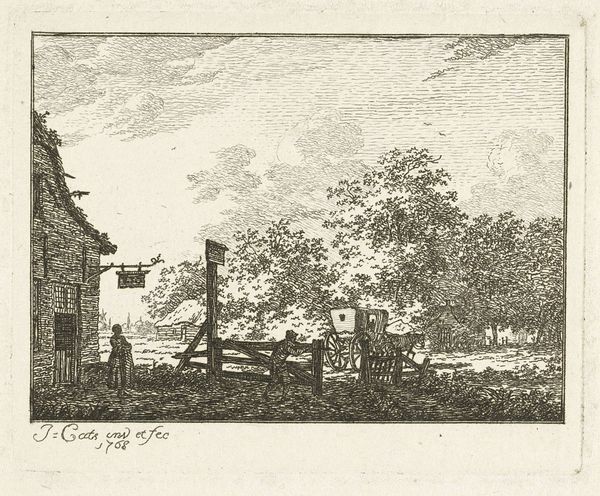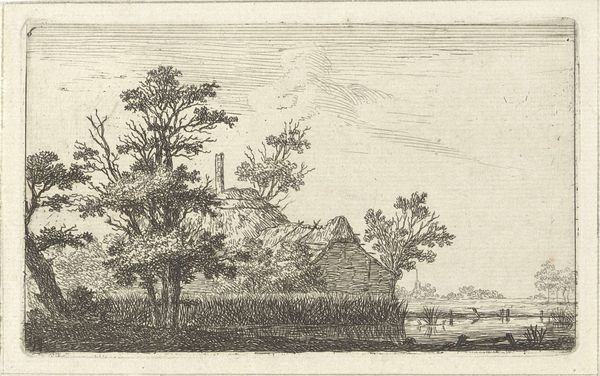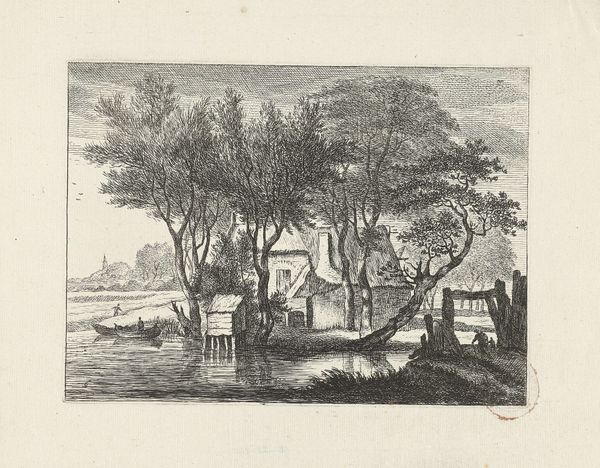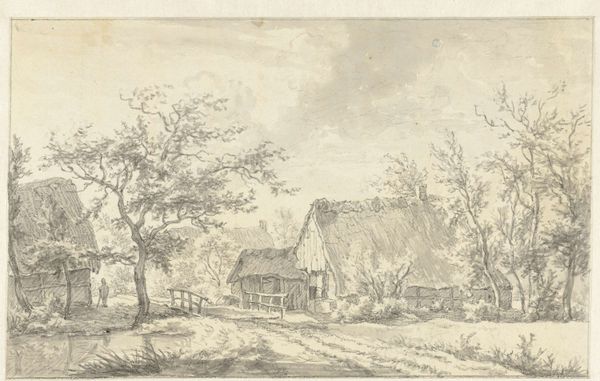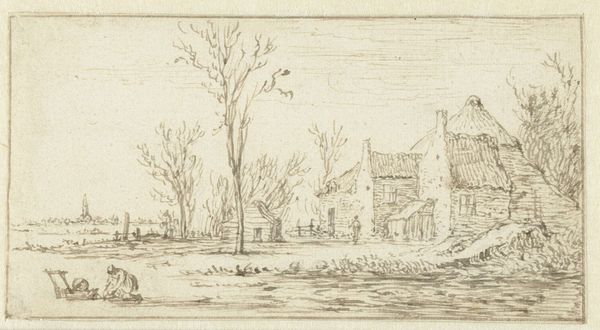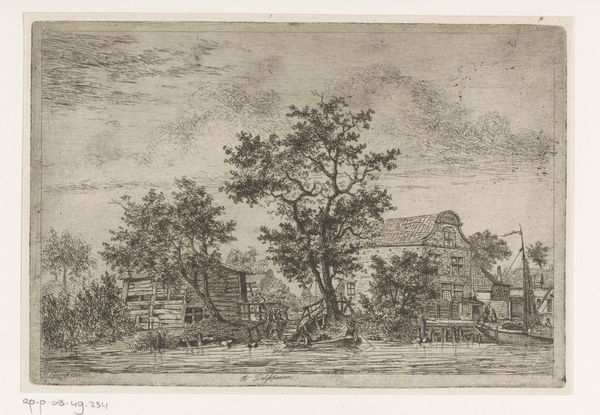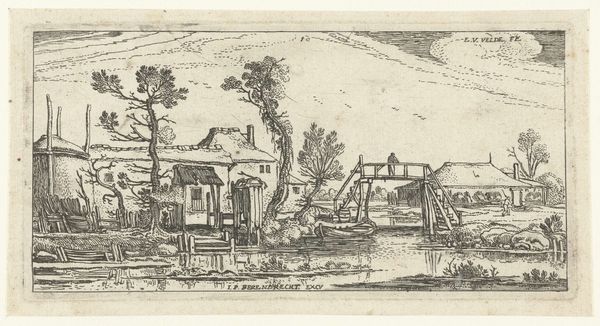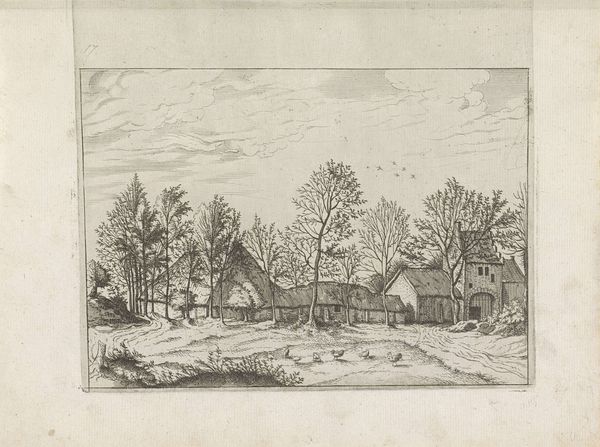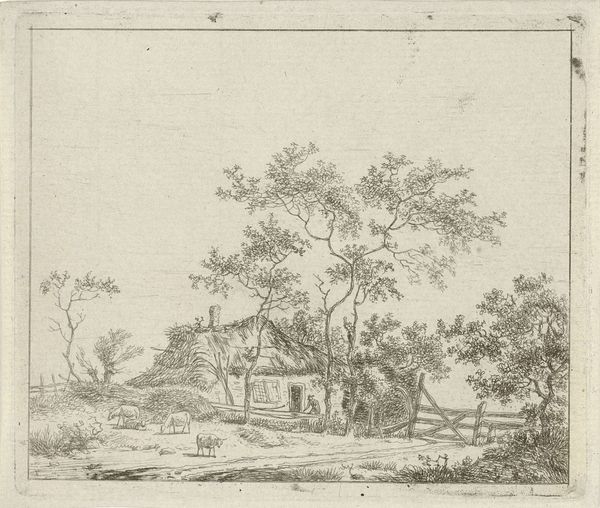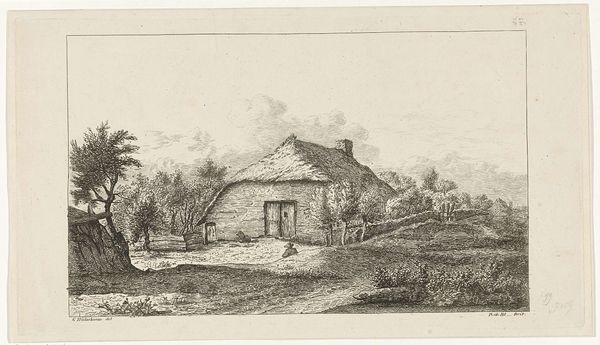
drawing, ink, engraving
#
drawing
#
landscape
#
ink
#
engraving
#
realism
Dimensions: height 74 mm, width 127 mm
Copyright: Rijks Museum: Open Domain
Curator: There’s something hauntingly bucolic about this scene. A quiet dignity, perhaps? Editor: Indeed. This is Hendrik Schwegman’s “Landscape with Farms and Woman with Child,” created in 1786. We see an engraving on paper, meticulously rendered. Tell me, what’s the first formal element that strikes you? Curator: The dominance of line! Look at how the hatching defines the forms, especially in the thatch roof. It's almost sculptural. But the scene itself, a mother and child by these somewhat dilapidated farm buildings...it feels melancholy. Editor: Precisely! Note how Schwegman uses the vertical lines of the tree and the buildings to create a sense of depth and perspective, contrasted by the softer, more organic shapes of the foliage. The limited tonal range creates a serene, almost ethereal quality. Curator: Do you think it’s idealized? It looks very lived-in, yet framed in a picturesque way. Almost like looking at it with a Claude glass. The picturesque seems to prettify poverty in an odd way. Editor: An intriguing point! One might argue Schwegman is not merely documenting a scene but composing an image intended to evoke a particular feeling – perhaps a romanticized view of rural life typical of the period. Observe the figures – tiny and unassuming, emphasizing the scale of nature. They almost fade into their surroundings. Curator: Right, the architectural structure plays so much. The open gate suggests both invitation and vulnerability. Is Schwegman drawing from the visual language of ruin or decay? Is the mother seeking refuge or merely passing through? Editor: It's an open question. He masterfully employs a visual rhetoric. The lines converge to guide the viewer’s eye toward a horizon—though subtly blurred and indefinite. Do you feel that ambiguity extends beyond the visible structures, hinting at emotional structures as well? Curator: Yes, in fact. And despite the relatively small scale of the artwork, it feels expansive, doesn’t it? Perhaps because what’s excluded looms as much as what is represented. Editor: I agree. This small engraving opens up enormous considerations about the relationship between representation, idealization, and emotional resonance. A quietly powerful work.
Comments
No comments
Be the first to comment and join the conversation on the ultimate creative platform.

